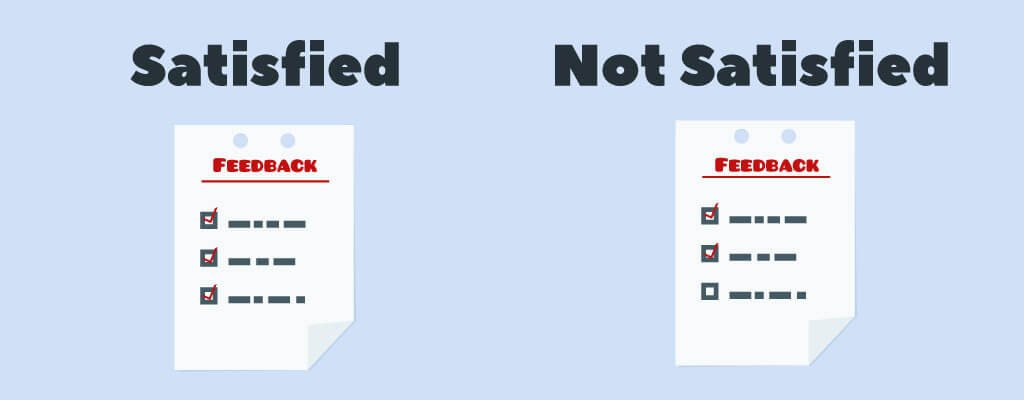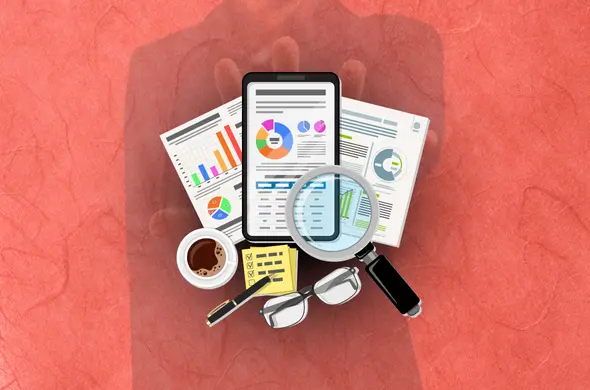Updated
February 23, 2023
Written by
Alyssa Maano
A lot goes into corporate operations, particularly product and service creation. all the way from product planners and designers to testers. The planners may be confident in the functionality, the designers in the structure, and the testers in the usability, but this does not guarantee that a product or service will be popular with the general public.
The personnel and everyone involved in the development only belong to a very small sample compared to the veritable sea of customers—where their reception dictates whether the product will succeed to steal the spotlight or not.
This is proven by the history of products and services that failed, many of them by large and well-known firms, due to low sales caused by functional flaws or unpopularity. Despite low to no demand and no prior research with audience feedback, products and services were created to pursue the hype.
In the business industry, innovation goes hand-in-hand with market reception. Let’s discuss why it is imperative to get customer feedback.
Click here to read more about Customer Escalation Management: Our Complete Guide.
What Is Customer Feedback and Why Is It Important?
5 Ways To Obtain Customer Feedback
Never Miss a Thing With Outsourcing!

63% of customers expect businesses to know their unique needs and expectations. 54% expect companies to anticipate their needs. But it is worth noting that business personnel are not mind readers and instead have to rely on research to prepare for such needs and expectations. A major part of the data comes from customer feedback.
Customer feedback is the information given by customers about their experiences with a product, service, or any transactions with a company. It is how companies are able to gauge whether they are doing well in terms of delivering their products or services.
Of course, it doesn’t stop at simply getting customer feedback. When data is not circulated or action is not taken, it is meaningless. To combat this, a customer feedback loop is used as a customer experience strategy. The stages are as follows:
The customer feedback loop makes sure that the customer feedback circulates through the concerned company personnel and closes the loop with an action towards improvement. Effectively utilizing customer feedback has the following benefits:
Addressing concerns, especially within a short amount of time, leads to customer satisfaction. It’s not only the responder who benefits, but also the other customers who share the same concerns or are reluctant to voice them. Satisfied clients are then more likely to pay more for a product or service, confident in the reliability of the business.
If a company takes into consideration the gathered customer feedback, it is proof that they have customer care in mind. Besides the high ratings on review sites, a positive experience begets positive feedback and a higher possibility of being recommended to their personal network.
Through customer feedback, people can express helpful suggestions that haven’t been initially considered by the company and that can benefit other demographic groups. People have different situations, and feedback can open the company’s eyes to other customer needs. These situations might involve cultural nuances, language matters, user accessibility issues, and the like.
These are only some of the most prominent benefits from gathering and analyzing data given by the customers. This is a guide that gives you five methods of obtaining customer feedback.

Surveys come in many forms, with customer satisfaction surveys being the one most used by businesses in how to get customer feedback. It has different types that differ in the type of information collected but can also be combined into a single survey for a more diverse response.
To know more, you can read about the six key benefits of customer satisfaction surveys.
Pros:
Surveys contain specific questions that prompt respondents to provide the required information. Additionally, it is simpler to respond to the questions, particularly those with multiple possible answers. In addition, it produces more quantifiable results, especially when rating scales are employed.
Cons:
Clearly, surveys require participants. Except for rare cases of unskippable surveys, some customers just ignore these after finishing a transaction. Some clients may be discouraged from completing these surveys due to their length.

One of the most common ways to get feedback from customers is by sending follow-up emails, usually after a finished transaction. It is a way to check up on the client and ask about their experiences with the company
Pros:
Emails are a direct way to reach a client and a nonverbal indication that the brand is open to future communication. Due to the direct contact, the messages and interactions can also be more personalized.
To help you with your email format, read more about our blog on customer service email templates.
Cons:
Emailing is one-on-one communication, so if you want to talk to more than one customer, you need more people. An open-ended prompt can also be more difficult for the other customers, who need too much effort.

Using social media is one of the easiest ways on how to obtain customer feedback. With over half of the world's population on social media, it's a veritable gold mine of freely shared information.
Individual posts, comments, and discussions in online forums contain it. It’s even easier if the brand has its own social media accounts.
Pros:
People speak up more when they don't have to answer a set of questions or follow strict rules. With the help of hashtags and trending pages, it's also easier to spot customer trends on social media.
Before launching or even planning a product, brands can use social media as a testing ground. You can poll the audience by asking questions, posting relevant content, or showing a teaser.
Cons:
The free aspect can be a double-edged sword because social media content is colored by current social trends or specific context. It can be difficult to identify feedback unless it is specified or posted in a specific forum.

Customer reviews are also available in listings and on review sites. It's a cross between surveys and social media customer feedback in that it's not restricted by specific questions but is still directly related to what's being reviewed.
Pros:
93% of users state that online reviews impact their buying decisions. The manner in which the company responds to the review may also play a role in the decision-making process.
The reviews can reveal the state of the business as well as the typical customer response. Because of the standardized interface for customer reviews, businesses can easily respond, whether to thank a positive review or appease a negative one.
Cons:
When there are a lot of reviews, it becomes extremely difficult to respond to each individual one. Furthermore, because reviews are public, a blunder or an unfulfilled promise is easily discovered.
There are also people who post negative reviews just for the heck of it, also called trolls. These people not only leave one, but oftentimes drop a bomb of multiple negative reviews.

Despite the convenience and farther reach of the Internet and technology, one should not disregard how to get feedback from customers through physical correspondence. These can come in the form of surveys or questions printed on paper and distributed to the customers after the transaction.
Pros:
The company staff can confirm that the feedback forms have reached the customer and they can monitor the process of answering them.
As the data gathering happens face-to-face, the personnel also have a visual reference of the demographic and can ask specific questions that are not mentioned in the forms.
Cons:
With the feedback being written on paper, the data needs to be entered in order to be quantified and analyzed.
If the data is lost before it can be stored in the database, it cannot be recovered and would have to be repeated for another group of customers.
Feedback from customers can dictate the direction and success of a product or service. It is the compass that lets you know whether you’re going in the right or wrong direction.
Knowing where to look and incorporating this feedback signals that you are willing to work with your customers, and in fact, encourage their involvement in providing needed improvements.
NMS makes sure to boost your customer relationship by allowing your personnel to prioritize the frontside development. Our smart email support services automate the follow-up emails, not bypassing every opportunity for customer interaction.
Our dedicated agents support a 24/7 schedule and multilingual capability, opening possibilities from multiple demographics. Leave the work to us and get real-time updates and data reports to boost your company growth.
Get the finest and most efficient cloud-based internal reply center. Contact us!
A lot goes into corporate operations, particularly product and service creation. all the way from product planners and designers to testers. The planners may be confident in the functionality, the designers in the structure, and the testers in the usability, but this does not guarantee that a product or service will be popular with the general public.
The personnel and everyone involved in the development only belong to a very small sample compared to the veritable sea of customers—where their reception dictates whether the product will succeed to steal the spotlight or not.
This is proven by the history of products and services that failed, many of them by large and well-known firms, due to low sales caused by functional flaws or unpopularity. Despite low to no demand and no prior research with audience feedback, products and services were created to pursue the hype.
In the business industry, innovation goes hand-in-hand with market reception. Let’s discuss why it is imperative to get customer feedback.
Click here to read more about Customer Escalation Management: Our Complete Guide.
What Is Customer Feedback and Why Is It Important?
5 Ways To Obtain Customer Feedback
Never Miss a Thing With Outsourcing!

63% of customers expect businesses to know their unique needs and expectations. 54% expect companies to anticipate their needs. But it is worth noting that business personnel are not mind readers and instead have to rely on research to prepare for such needs and expectations. A major part of the data comes from customer feedback.
Customer feedback is the information given by customers about their experiences with a product, service, or any transactions with a company. It is how companies are able to gauge whether they are doing well in terms of delivering their products or services.
Of course, it doesn’t stop at simply getting customer feedback. When data is not circulated or action is not taken, it is meaningless. To combat this, a customer feedback loop is used as a customer experience strategy. The stages are as follows:
The customer feedback loop makes sure that the customer feedback circulates through the concerned company personnel and closes the loop with an action towards improvement. Effectively utilizing customer feedback has the following benefits:
Addressing concerns, especially within a short amount of time, leads to customer satisfaction. It’s not only the responder who benefits, but also the other customers who share the same concerns or are reluctant to voice them. Satisfied clients are then more likely to pay more for a product or service, confident in the reliability of the business.
If a company takes into consideration the gathered customer feedback, it is proof that they have customer care in mind. Besides the high ratings on review sites, a positive experience begets positive feedback and a higher possibility of being recommended to their personal network.
Through customer feedback, people can express helpful suggestions that haven’t been initially considered by the company and that can benefit other demographic groups. People have different situations, and feedback can open the company’s eyes to other customer needs. These situations might involve cultural nuances, language matters, user accessibility issues, and the like.
These are only some of the most prominent benefits from gathering and analyzing data given by the customers. This is a guide that gives you five methods of obtaining customer feedback.

Surveys come in many forms, with customer satisfaction surveys being the one most used by businesses in how to get customer feedback. It has different types that differ in the type of information collected but can also be combined into a single survey for a more diverse response.
To know more, you can read about the six key benefits of customer satisfaction surveys.
Pros:
Surveys contain specific questions that prompt respondents to provide the required information. Additionally, it is simpler to respond to the questions, particularly those with multiple possible answers. In addition, it produces more quantifiable results, especially when rating scales are employed.
Cons:
Clearly, surveys require participants. Except for rare cases of unskippable surveys, some customers just ignore these after finishing a transaction. Some clients may be discouraged from completing these surveys due to their length.

One of the most common ways to get feedback from customers is by sending follow-up emails, usually after a finished transaction. It is a way to check up on the client and ask about their experiences with the company
Pros:
Emails are a direct way to reach a client and a nonverbal indication that the brand is open to future communication. Due to the direct contact, the messages and interactions can also be more personalized.
To help you with your email format, read more about our blog on customer service email templates.
Cons:
Emailing is one-on-one communication, so if you want to talk to more than one customer, you need more people. An open-ended prompt can also be more difficult for the other customers, who need too much effort.

Using social media is one of the easiest ways on how to obtain customer feedback. With over half of the world's population on social media, it's a veritable gold mine of freely shared information.
Individual posts, comments, and discussions in online forums contain it. It’s even easier if the brand has its own social media accounts.
Pros:
People speak up more when they don't have to answer a set of questions or follow strict rules. With the help of hashtags and trending pages, it's also easier to spot customer trends on social media.
Before launching or even planning a product, brands can use social media as a testing ground. You can poll the audience by asking questions, posting relevant content, or showing a teaser.
Cons:
The free aspect can be a double-edged sword because social media content is colored by current social trends or specific context. It can be difficult to identify feedback unless it is specified or posted in a specific forum.

Customer reviews are also available in listings and on review sites. It's a cross between surveys and social media customer feedback in that it's not restricted by specific questions but is still directly related to what's being reviewed.
Pros:
93% of users state that online reviews impact their buying decisions. The manner in which the company responds to the review may also play a role in the decision-making process.
The reviews can reveal the state of the business as well as the typical customer response. Because of the standardized interface for customer reviews, businesses can easily respond, whether to thank a positive review or appease a negative one.
Cons:
When there are a lot of reviews, it becomes extremely difficult to respond to each individual one. Furthermore, because reviews are public, a blunder or an unfulfilled promise is easily discovered.
There are also people who post negative reviews just for the heck of it, also called trolls. These people not only leave one, but oftentimes drop a bomb of multiple negative reviews.

Despite the convenience and farther reach of the Internet and technology, one should not disregard how to get feedback from customers through physical correspondence. These can come in the form of surveys or questions printed on paper and distributed to the customers after the transaction.
Pros:
The company staff can confirm that the feedback forms have reached the customer and they can monitor the process of answering them.
As the data gathering happens face-to-face, the personnel also have a visual reference of the demographic and can ask specific questions that are not mentioned in the forms.
Cons:
With the feedback being written on paper, the data needs to be entered in order to be quantified and analyzed.
If the data is lost before it can be stored in the database, it cannot be recovered and would have to be repeated for another group of customers.
Feedback from customers can dictate the direction and success of a product or service. It is the compass that lets you know whether you’re going in the right or wrong direction.
Knowing where to look and incorporating this feedback signals that you are willing to work with your customers, and in fact, encourage their involvement in providing needed improvements.
NMS makes sure to boost your customer relationship by allowing your personnel to prioritize the frontside development. Our smart email support services automate the follow-up emails, not bypassing every opportunity for customer interaction.
Our dedicated agents support a 24/7 schedule and multilingual capability, opening possibilities from multiple demographics. Leave the work to us and get real-time updates and data reports to boost your company growth.
Get the finest and most efficient cloud-based internal reply center. Contact us!
Help us devise custom-fit solutions specifically for your business needs and objectives! We help strengthen the grey areas on your customer support and content moderation practices.
Main Office
1710/35 Spring Street, Melbourne, VIC 3000 Australia
Other Offices
Melbourne
Texas
Manila
Zurich
Amsterdam
Dnipro
Email Us
A good company is comprised of good employees. NMS-AU encourages our workforce regardless of rank or tenure to give constructive ideas for operations improvement, workplace morale and business development.





